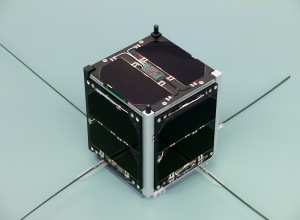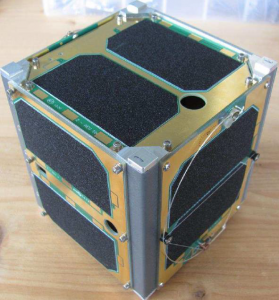Enligt nedanstående är transpondern igång denna vecka:
On December 21, 2015 at 1038 UT, the EO-79 transponder was turned on for a
prolonged period.
The FUNcube transponder subsystem on QB50p1 (EO-79) had been provided by AMSAT-
UK and AMSAT-NL and is a similar subsystem as on FUNcube-1, but without the
telemetry downlink circuitry.
The current software running on EO-79 does experience occasional reboots. When
these reboots happen, the transponder is automatically turned off and will have
to be turned back on by a command station. The FUNcube team has selected a few
command stations to do so, but be advised the transponder may be off.
TLEs:
AMSAT keps name: EO-79
Celestrak keps Name: QB50P1
Celestrak file: cubesat.txt
NORAD # 40025
COSPAR designator 2014-033-R
Frequencies:
*Uplink:* 435.035-435.065 MHz LSB [See note below]
*Downlink:* 145.935-145.965 MHz USB
EO-79 has been set to only beacon the normal AX.25 beacon every 30 seconds
instead of 10 seconds. The beacon frequency is 145.815 MHz and consists of AX.25
frames on BPSK. More details about the downlink can be found on the ISIS Ham
Radio page at http://isispace.nl/HAM/qb50p.html
We kindly request you to share your experiences with the AMSAT Bulletin Board so
everyone can benefit from operating tips and tricks, as well as being up-to-date
on the status.
We would also welcome any observation related to the transponder behaviour when
the AX.25 beacon comes on.
Just like FUNcube-1, the crystal oscillator circuits exhibit drift with
temperature. This means manual tuning will probably work best.
Mike Seguin N1JEZ notes: I found my downlink after setting my uplink +12 kHz
from published spec
SatPC32 tracking software Doppler SQF information used by Peter VK4NBL:
EO-79,145950,435063,USB,LSB,REV,0,0
EO-79,145814.8,435070,CW,TELEMETRY,0,0
Lastly, the commanding team will not be available over Christmas, so the current
activations are planned from today until Thursday 24th and from Monday 28th
until Thursday 31st
[ANS thanks Wouter, PA3WEG, and AMSAT-UK for the above information]



